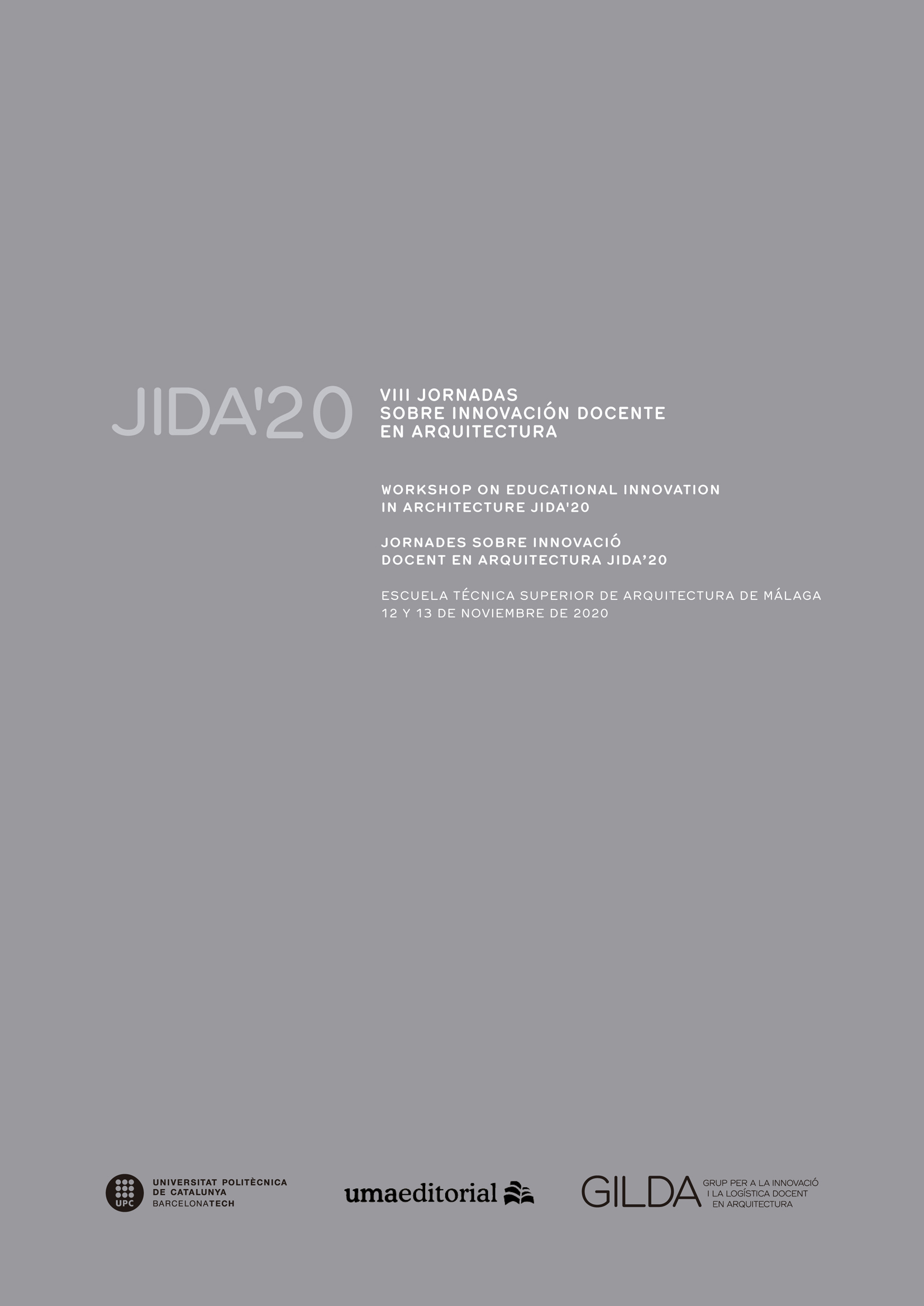Experimentación con capas tangibles e intangibles: COVID-19 como una capa intangible más
DOI:
https://doi.org/10.5821/jida.2020.9394Resumen
El trabajo por superposición de tramas de información gráfica ha sido una metodología de desarrollo proyectual utilizada por grandes arquitectos como alternativa a otros procesos metodológicos de diseño. Estas capas pueden estar referidas a aspectos tangibles de la arquitectura y el diseño urbano, esto es, elementos físicos, tocables, o a esas tensiones invisibles, intangibles que aportan valor sustancial a la arquitectura. La experimentación con este tipo de trabajo aporta al alumnado una metodología complementaria a otros procesos más lineales y controlados, permitiendo que la propia superposición de capas sugiera la aparición de ‘estructuras de sucesos’ inesperadas. En este artículo se presenta la secuencia de experimentación realizada sobre estas bases metodológicas en tres ejercicios consecutivos desde la composición en dos dimensiones, pasando por lo matérico hasta la creación de un proyecto completo. La pandemia COVID-19 entra a formar parte de estos estratos superpuestos de capas influyendo sustancialmente sobre el resultado final.
Citas
AGENCIA NACIONAL DE EVALUACIÓN DE LA CALIDAD Y ACREDITACIÓN (ANECA) (2020). Libro Blanco. TÃtulo de Grado en Arquitectura. http://www.aneca.es/var/media/326200/libroblanco_arquitectura_def.pdf [Consulta: 15 de septiembre de 2020]
BAUER, M. (2000). “Classical Content Analysis: A Review.†En Bauer, M. y Gaskell, G. Qualitative Researching with Text, Image and Sound. London: Sage Publications.
DE BARAÑANO, K. (1992). Husserl - Heidegger – Chillida. El concepto de espacio en la filosofÃa y plástica del siglo XX. San Sebastián: Universidad del PaÃs Vasco.
DEWEY, L. (1958). Experiencia y Educación. Madrid: Biblioteca Nueva.
ESCUELA TÉCNICA SUPERIOR DE ARQUITECTURA, zzzz [Consulta: 15 de septiembre de 2020]
LENZI, S., SÃDABA, J., LINDBORG, P. (In press). “Soundscape in Times of Change: Case Study of a City Neighbourhood during the COVID-19 Lockdown†en Frontiers in Psychology. Environmental Psychology.
LUPI, G. (2019). Room of change. <http://giorgialupi.com/the-room-of-change> [Consulta: 15 de septiembre de 2020]
KIPNIS, J. (1996). “OMA. Rem Khoolas†en El croquis, vol.79.
KUCKARTZ, U. (2014). Qualitative Text Analysis. London: Sage Publications.
MAKI, F. (1964). Investigations in Collective Form. Saint Louis: Washington University Press.
PROFESOR BASKERVILLE (2018). Parc de La Vilette. Estrategias proyectuales. https://profesorbaskerville.wordpress.com/2018/09/23/parc-de-la-villete-estrategias-proyectuales/ [Consulta: 15 de septiembre de 2020]
SIEMENS, G. (2004). Conectivismo: una teorÃa de aprendizaje para la era digital. http://edublogki.wikispaces.com/file/view/Conectivismo.pdf [Consulta: 20 de septiembre de 2020].






















